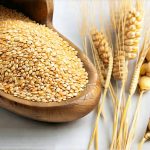Transitioning to a plant-based diet can be a profoundly positive step for many individuals, offering potential benefits related to health, ethics, and environmental sustainability. However, it’s not always a seamless process. One common hurdle newcomers face is nausea, often experienced during the initial stages of dietary change. This isn’t necessarily an indication that plant-based eating isn’t right for you; rather, it frequently signals your digestive system adjusting to a significantly increased fiber intake and different food compositions. Understanding why this happens and how to manage it can make all the difference between a frustrating experience and a smooth transition toward a more plant-forward lifestyle.
The body is remarkably adaptable, but sudden shifts in diet require time for adjustments. When switching from a standard Western diet – often high in processed foods, animal products, and refined sugars – to one rich in fruits, vegetables, legumes, and whole grains, the digestive system needs to develop new enzymes and bacterial flora to effectively process these foods. This is especially true if your previous diet was low in fiber. Nausea can occur as a result of this rapid change, coupled with potential bloating, gas, and changes in bowel movements. It’s crucial to approach this transition thoughtfully and strategically, prioritizing gradual adjustments rather than drastic overnight switches. If you are experiencing ongoing digestive issues consider when to ask your doctor for a full gut check.
Understanding the Root Causes
The primary reason for nausea during a plant-based diet transition is often related to fiber. Most people accustomed to a standard Western diet consume far less fiber than recommended. Suddenly increasing fiber intake can overwhelm the digestive system, leading to discomfort and nausea. Fiber absorbs water, and if you don’t drink enough fluids alongside increased fiber consumption, it can lead to constipation, further exacerbating feelings of sickness. It’s also important to note that different types of fiber affect people differently; some individuals are more sensitive to certain fibers (like those found in beans or cruciferous vegetables) than others. This is similar to experiencing constipation after switching to a low-fiber diet.
Beyond fiber, changes in gut microbiome play a significant role. Your gut is home to trillions of bacteria, and the composition of this microbiome dramatically influences digestion and overall health. Animal products support different bacterial populations compared to plant-based foods. As you eliminate animal products, your gut microbiome undergoes a shift – beneficial bacteria thrive on plant compounds, but this transition can temporarily disrupt digestive processes. This disruption can manifest as nausea, bloating, or gas. Finally, changes in the types of fats consumed also contribute. Switching from saturated and trans fats to unsaturated fats (found abundantly in plant-based foods) is generally healthier, but it can initially cause some digestive upset while your body adjusts to processing these different fat sources.
Gradual Implementation Strategies
The key to minimizing nausea when transitioning to a plant-based diet is gradual implementation. Don’t try to cut out all animal products and processed foods at once. Instead, adopt a phased approach:
1. Start by incorporating one or two plant-based meals per week, replacing existing meat-centered dishes with vegetarian or vegan alternatives.
2. Gradually increase the frequency of plant-based meals over several weeks.
3. Focus on adding new plant foods rather than solely restricting animal products. This positive approach feels less restrictive and allows your body to adapt more easily.
Furthermore, pay close attention to portion sizes. Even healthy foods can cause discomfort if eaten in excess. Begin with smaller portions of fiber-rich foods, and gradually increase the amount as your digestive system adapts. Consider keeping a food diary to track what you eat and how it affects you. This can help identify specific triggers or sensitivities. Mindful eating is also crucial – take time to chew your food thoroughly, which aids digestion and reduces the likelihood of discomfort. For some, bloating when starting a new diet can be particularly challenging.
Hydration & Electrolyte Balance
Adequate hydration is paramount when increasing fiber intake. Fiber absorbs water, so if you’re not drinking enough fluids, constipation can occur, leading to nausea. Aim for at least eight glasses of water per day, and even more if you’re active or live in a hot climate. Beyond water, consider incorporating electrolyte-rich beverages, especially if you experience diarrhea or vomiting alongside nausea. Electrolytes (sodium, potassium, magnesium) are lost through these processes and need to be replenished.
Natural sources of electrolytes include:
– Coconut water – naturally contains potassium, sodium, and magnesium.
– Fruit juice diluted with water – provides some electrolytes and hydration.
– Vegetable broth – a good source of sodium.
– Bananas – rich in potassium.
It’s important to note that overly sugary sports drinks are generally not recommended; they can exacerbate digestive issues. Plain water with a pinch of sea salt or a squeeze of lemon is often the best option for rehydration and electrolyte balance. If you suspect severe dehydration, consult a healthcare professional.
Soothing Remedies & Digestive Aids
Several natural remedies can help alleviate nausea during a plant-based transition. Ginger is well-known for its anti-nausea properties; consume it in the form of ginger tea, crystallized ginger, or add fresh ginger to your meals. Peppermint also has soothing effects; peppermint tea or chewing on fresh mint leaves can provide relief. Another effective remedy is acupuncture or acupressure, which involves applying pressure to specific points on the body to stimulate digestion and reduce nausea.
Digestive enzymes can be particularly helpful if you struggle with digesting certain plant foods, like legumes. These are available over-the-counter and can help break down complex carbohydrates, reducing bloating and discomfort. Probiotic supplements or fermented foods (like sauerkraut or kimchi) can also support a healthy gut microbiome, aiding digestion and potentially lessening nausea. However, it’s important to choose high-quality probiotic supplements with diverse strains of bacteria. If constipation persists after transitioning to a grain-free diet, consider seeking further guidance. Ultimately, listening to your body is key – if a particular remedy doesn’t seem to help, try something else. For those who have transitioned to a raw food plan, it’s important to be mindful of the increased fiber intake. And if you are still concerned about your digestive health, you might want to learn when to ask for a motility scan.


















